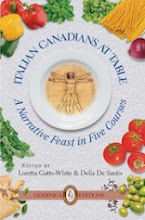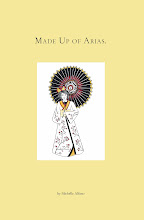 The Girl with the Dragon Tattoo
The Girl with the Dragon Tattoo by
Stieg Larsson (Viking Canada, 2005) 465 pages
A
Vanity Fair article on the Swedish writer
Stieg Larrson triggered my interest in this book. A fervent anti-racist, there was a great deal of speculation about the true cause of his death when
Larrson died in 2004 at a relatively young age in his 50s.
Larrson wrote a trilogy of books (also known as
the Millennium Trilogy), all handed over to his publisher before his death. This book is the first of the series and has achieved international success.
The Swedish journalist Mikael
Blomkvist, our protagonist, who is also the publisher of the magazine
Millennium loses a libel case brought by the industrialist Hans-Erik
Wennerström. In the wake of financial uncertainty and imminent unemployment,
Blomkvist agrees to be hired by Henrik
Vanger, the scion of a dysfunctional, powerful corporate dynasty and the former CEO of the
Vanger companies.
Henrik
Vanger lures
Blomkvist to his home on a secluded island under the pretense of having him write a family history but his true motive is to persuade
Blomkvist to to solve the disappearance of
Vanger's great-niece Harriet (his brother Harald's granddaughter). She disappeared when she was sixteen in 1965.
Vanger believed Harriet was murdered by a family member. The island on which
Vanger lives was sealed off from the mainland on the day of Harriet's disappearance because of a road-tanker crash on the only bridge leading to the island.
An odd clue remains from that time, Harriet had given
Vanger pressed flowers every year since she was eight. After her disappearance, on
Vanger's birthday, he began to receive pressed flowers from an anonymous source from various locations in the world. He believed that these were sent by Harriet's killer.
In exchange for the investigative work,
Vanger was to provide incriminating info on
Wennerström to
Blomkvist.
The real main character of the story is Lisbeth
Salander. As the book opens Lisbeth is preparing a detailed profile on
Blomkvist for a client (who is, it turns out, is Henrik
Vanger). She has her own sordid story of abuse and exploitation by the men in her life which is revealed much later in the novel. When
Blomkvist learns that
Salander is the person who gathered intelligence on him for Henrik
Vanger he hires her to do some research into some long unsolved murders that seem relevant to Harriet's disappearance.
Lisbeth is asocial, taciturn, covered in tattoos and piercings, rides a motorcycle ... disassociated from mainstream society and with a well deserved dislike of authority and men who have both treated her with great contempt and extreme violence. She wears her alienation from "normal" society like a badge. She operates under the radar as an expert computer hacker as well as an investigator.
But she is somewhat charmed by
Blomkvist and intrigued by the project. Why had the disappeared girl Harriet recorded the sexual abuse and murders of a number of women who were killed before her and linked their deaths to key passages of the bible in her journal in code? That is the riddle that they set out to find. Why does Cecilia
Vanger, now
Blomkvist's new love interest, seem to appear in an incriminating photo shot on the day of Harriet's disappearance?
The remaining members of the
Vanger clan unite against
Blomkvist once they learn of his poking around in their past. A series of violent incidents take place against
Blomkvist and then the pair know that they have come across some incriminating evidence which is threatening either the person responsible for Harriet's disappearance or someone protecting that person.
Lisbeth's superhuman resolve and initiative to protect
Blomkvist has created a new kind of fictional heroine: tough, resilient, smart, resourceful and more than capable of saving the day. She would be phenomenal on film. She almost makes up for all the goriness of the women's' murders.
The resolution of the girl's disappearance is satisfying and plausible and does not disappoint. However, the final thirty pages are devoted to a resolution of the
Wennerström situation which serves, I think, a left leaning political agenda (corporations are evil and must be destroyed or at least disabled) rather than serving a satisfying fictional conclusion.
What other thing perturbed me. The crimes against the murdered women that they uncover are horrific in nature, terrifically violent. Need they be? From a purported feminist and anti-racist writer, they are described with too much graphic detail which, I think, serves to titillate rather than enlighten at times. It paints a bleak picture of Swedish men (if it is accurate I cannot say) as violent misogynists with the exception of
Blomkvist.
There is some clumsy writing from
Larrson, or perhaps
Reg Keeland the translator, who for instance describes an abusive husband as "a brutal domestic". This leads me to believe that English is not his first language. A potential suspect is referred to as "a common or garden bastard" perhaps meaning "garden variety" bastard. Sexual coercion of a certain type of act perpetrated upon Lisbeth is described as rape (as heinous as it is - it does not constitute rape). Her guardian describes Lisbeth is described as basically "mentally handicapped". Yet she works in a job juggling complex information and reports on clients, preparing reports and has her own place. There are many such awkward instances of mangled English.
Despite a slow start having to do with the libel case which provides the trigger for
Blomkvist's leaving Stockholm, the story does pull you along as the hidden story of the
Vanger family unravels across two continents.
Larrson weaves together many complex elements to create a compelling story. I raced to the end to finish the story and I look forward to the second book
The Girl Who Played with Fire.
For a more thorough analysis of those elements perceived to be feminist by some and misogynistic by others see this
F Word review.

















